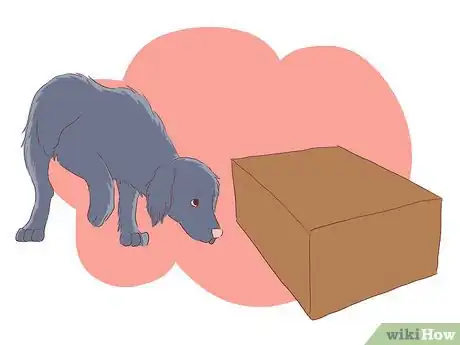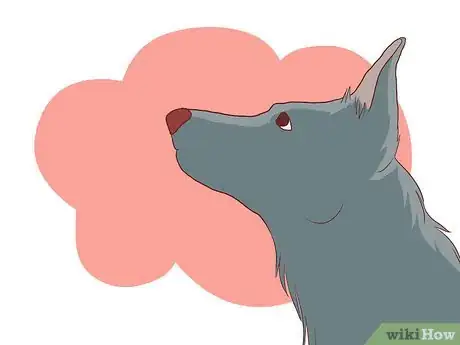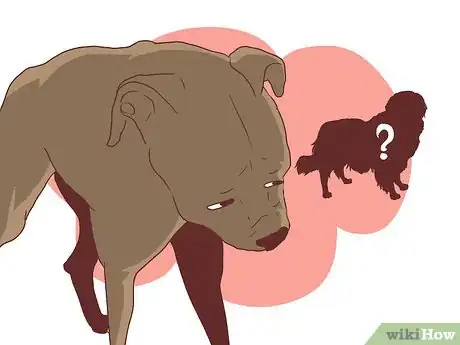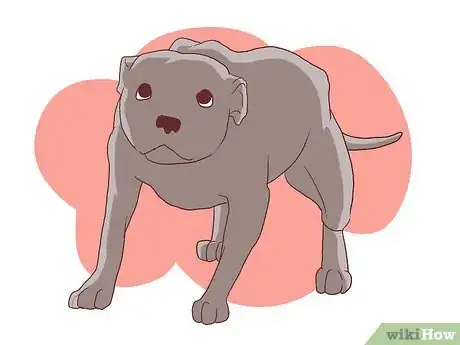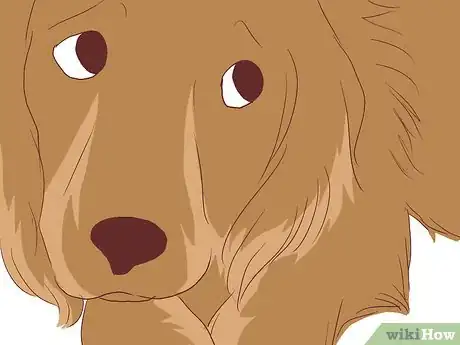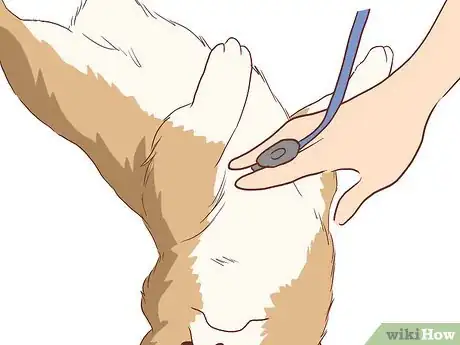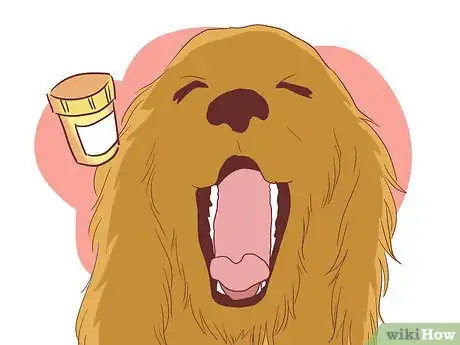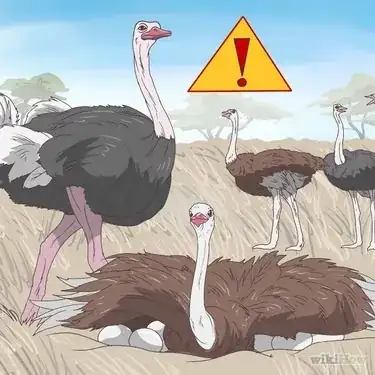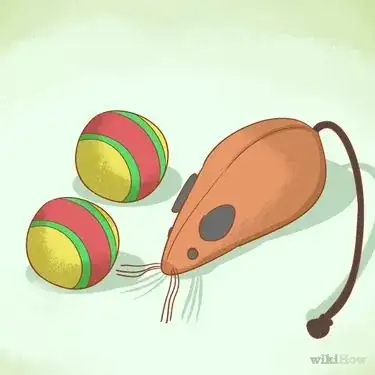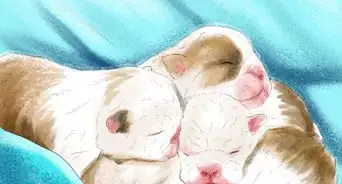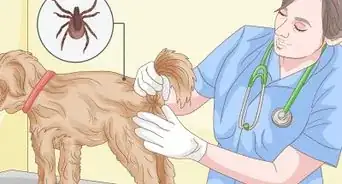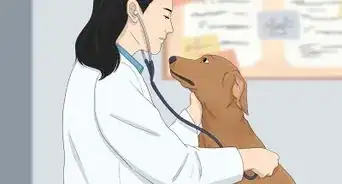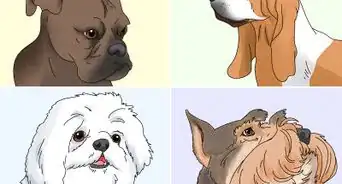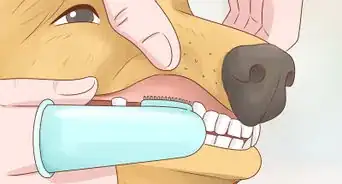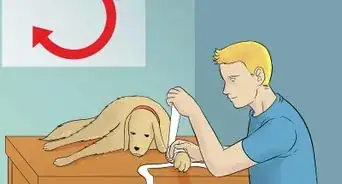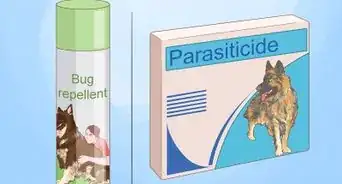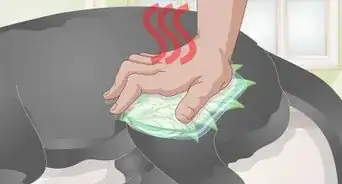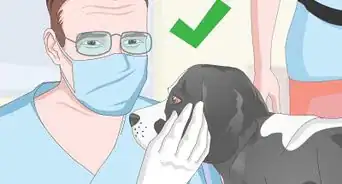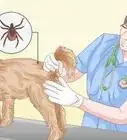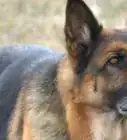This article was co-authored by Pippa Elliott, MRCVS. Dr. Elliott, BVMS, MRCVS is a veterinarian with over 30 years of experience in veterinary surgery and companion animal practice. She graduated from the University of Glasgow in 1987 with a degree in veterinary medicine and surgery. She has worked at the same animal clinic in her hometown for over 20 years.
There are 10 references cited in this article, which can be found at the bottom of the page.
wikiHow marks an article as reader-approved once it receives enough positive feedback. In this case, 93% of readers who voted found the article helpful, earning it our reader-approved status.
This article has been viewed 146,765 times.
Human grief has five recognizable stages: denial, anger, bargaining, depression, and finally, acceptance. Although there is no doubt that a dog can feel the loss of a close canine companion, his grief takes a different form.[1] His emotional turmoil is due to a change in daily routine, and the loss of security associated with a change in the pack structure, which can then trigger depression. Dogs are individuals, so they will show their depression differently. If your dog is affected by the loss of another, there are actions you can take to help it adjust.
Steps
Alleviating Your Dog's Grief
-
1Consider letting your dog view the body. Many people believe that letting the surviving dog see the body of his deceased companion helps him come to terms with the death. The theory is that the dog forms an understanding that his companion is dead and therefore copes better with the loss; however, there is no scientific proof one way or the other that this is the case, so do what you feel is best for you and your pup.[2]
- It's difficult to pinpoint why some dogs do better than others and if viewing the body has anything to do with that. However, it's unlikely that seeing his old friend would do him any harm, so, ultimately, the choice is up to you.
- Often times, the grief or depression that a dog exhibits after the death of another dog stems from an evident change in "pack order." This can then lead to a lost sense of security or routine.
-
2Keep a regular routine to help them adjust. The survival instinct of dogs in the wild means that they don't take time out to grieve, and tend to keep going with the daily pattern of hunting and grooming. Keeping to your normal routine decreases the dog's feeling of stress – the last thing he needs after the loss of a companion is for his world to be turned upside down.[3]
- Thus, hard as it is when one of the dogs has gone, stick to your usual habits: feed him at the same time as usual, take him for walks, and visit places you normally go. This reassures the dog that life goes on, which in turn helps him to cope.
Advertisement -
3Be careful not to enable your dog. It is human nature to want to comfort a pet after a loss; however, this may not be the best way to alleviate his grief. Take the example of a dog that stops eating. The owner's reaction is then to hand-feed the pet, and praise him when he accepts morsels from the hand. In effect the owner is rewarding the dog for eating from his hand, rather than from a bowl. Thus, when you want the dog to eat from the bowl he refuses, preferring the one-to-one attention of hand-feeding. This becomes a habit that is unhealthy for him and unsustainable for you.[4]
- A much better option is to act normally around food and feeding time, thus reinforcing the impression that although the other dog has gone, all is still right with his world. Thus, put the food down as usual, and if the dog doesn't eat, after ten minutes throw the food away and don't offer anything else until the next mealtime. This sounds harsh, but in dog language it is enforcing a sense of routine and security, which is what he needs during this time.
-
4Give him time to find his place. Dogs need to know their place in "the pack" in order to feel secure, and when a member of their pack passes away, it can leave the survivor feeling confused and anxious. The key to this period of adjustment, be it for the leader or subordinate, is keeping to a regular routine and spending time training or playing with the dog, continuing as normal.[5]
- If the deceased dog was the leader, the survivor may feel insecure since his understanding of who is in charge has changed. This can show itself as barking excessively at other dogs, either to assert his new found freedom, or more likely because he feels threatened and barks to warn other dogs off.
- If the deceased was the subordinate dog, the surviving pack leader may experience a loss of purpose, in that his guidance and support is no longer needed. He may seem restless and aimless as he patrols around, without a pack member to follow his lead.
-
5Fill his time with interactive play. Two dogs that live together are constantly interacting with each together in subtle ways. When one of the dogs dies, his companion may well feel under-stimulated and even bored. It helps the dog to adjust if you can fill the gap with mental stimulation such as games, extra walks, and even teaching him a new trick or two.[6]
- This excellent one-on-one interaction will divert his attention and strengthen the bond between you. It may even help alleviate your grief, too.
-
6Carefully consider getting a new dog. The best time to get another dog is when you feel ready, rather than immediately so as to comfort another dog. Dogs are individuals and if the survivor had a strong bond to the deceased, it is unlikely you will replicate this purely by adding another dog into the household – think of it in terms of "buying" a new best friend – as nice as it sounds, it just doesn't work like that.[7]
- There is also a possibility of making the situation worse by stressing the survivor with a strange dog intruding on his territory. Only get another dog if you're confident the two of you are ready.
-
7Test out a friend's dog before adding a new dog to your family. If you feel strongly that a new dog is the answer, test it out by borrowing a friend's dog and letting them play together. See how your dog reacts and whether it helps or not. If he takes to the other dog, he may be ready. If he doesn't, it's best to wait.
- If you're dead set on another dog and your current one doesn't take to your friend's, consider another of a different sex or size. Your dog may be likely to take to a dog that's less (or more) intimidating or one of another disposition.
Treating Canine Depression
-
1Learn to recognize canine depression.[8] Dogs usually show their depression through their body language. Seeing your dog show symptoms of depression might be alarming, but it's normal for them to show these symptoms after a loss. However, if your dog continues to show signs of depression for longer than a month or your dog is behaving out of character, talk to your vet to discuss potential treatment options. Here are the common signs of canine depression:[9]
- Refusing to eat
- Refusing to engage in activities he once enjoyed
- A change in sleeping patterns (either sleeping more than usual or being unable to settle)
- A change in habits (for example, he no longer gets up to greet you upon your return home)
-
2Talk to your vet about dog appeasing pheromones. Grief is a natural process that needs to be worked through, and numbing those feelings with medication is not the way ahead unless the depression goes on for several weeks. If, however, you have done everything right and three or four weeks down the line your dog still seems depressed, then it is worth getting him assessed by a veterinarian. One option he or she may suggest is a dog appeasing pheromone.[10]
- This is marketed as Adaptil, and is available as a plug-in diffuser that infuses the pheromone into the air, or on a collar worn close to the dog's skin. Adaptil contains a synthetic analogue of the chemical messenger (pheromone) given off by a nursing doggy mom that makes her pups feel safe and content. The dog breathes the pheromone in and it activates feelings of safety and wellbeing. While this is not a quick fix, it can help to decrease anxiety levels in a stressed dog, which can help him turn a new corner and become more well-adjusted.
-
3Talk to your vet about prescription anti-depressants. Another option your vet may suggest is a prescription anti-depressant, usually reserved for when all else fails and the symptoms have lasted over a month. The anti-depressant medication that is licensed for use in dogs is called clomipramine, which is a tricyclic antidepressant. This works by blocking the reuptake of certain neurotransmitters (serotonin and norepinephrine) in the brain, which has an anti-anxiety effect.[11]
- The dose is 1-2mg/kg twice a day by mouth. Thus a 30kg Labrador requires half an 80mg tablet, twice a day.
- This drug does have side effects such as a dry mouth and constipation, and can increase the plasma levels of certain anti-epileptic drugs and so should be used with caution in these cases.
Our Most Loved Articles & Quizzes
References
- ↑ https://www.psychologytoday.com/us/blog/canine-corner/201611/do-dogs-grieve-over-the-loss-animal-companion
- ↑ https://www.bluecross.org.uk/pet-advice/how-help-grieving-dog
- ↑ https://www.cesarsway.com/dog-in-mourning-helping-our-pets-cope-with-loss/
- ↑ Canine Behavior: a guide for Veterinarians. Bonnie Beaver.Publ. WB Saunders
- ↑ https://www.petmd.com/news/view/helping-your-dog-understand-loss-their-canine-companion-35287
- ↑ https://www.psychologytoday.com/us/blog/here-there-and-everywhere/201406/10-tips-helping-your-grieving-pet
- ↑ https://www.bluecross.org.uk/pet-advice/how-help-grieving-dog
- ↑ https://pets.webmd.com/dogs/features/depression-in-dogs#1
- ↑ https://www.cesarsway.com/warning-signs-of-dog-depression/
- ↑ https://pets.webmd.com/features/pet-pheromone-products-for-behavior-problems#1
- ↑ BSAVA Small Animal Formulary. Ramsay. Publisher: British Small Animal Veterinary Association. 6th edition
About This Article
If your dog is having a hard time dealing with the death of another dog, there are things you can do to help it adjust. Keep a regular routine for your surviving dog to decrease its stress. Since dogs who live together are constantly interacting, the death of one dog can leave the other one feeling bored, so help it adjust by taking it on extra walks, teaching it a few new tricks, or getting it puzzle games. While it’s normal for your dog to show signs of depression, like refusing to eat, changing sleep patterns, and a disinterest in activities, after the loss of another dog, talk to your vet if these symptoms linger for more than a month. For more tips from our Veterinary co-author, including how to bring another dog into your life, keep reading!
